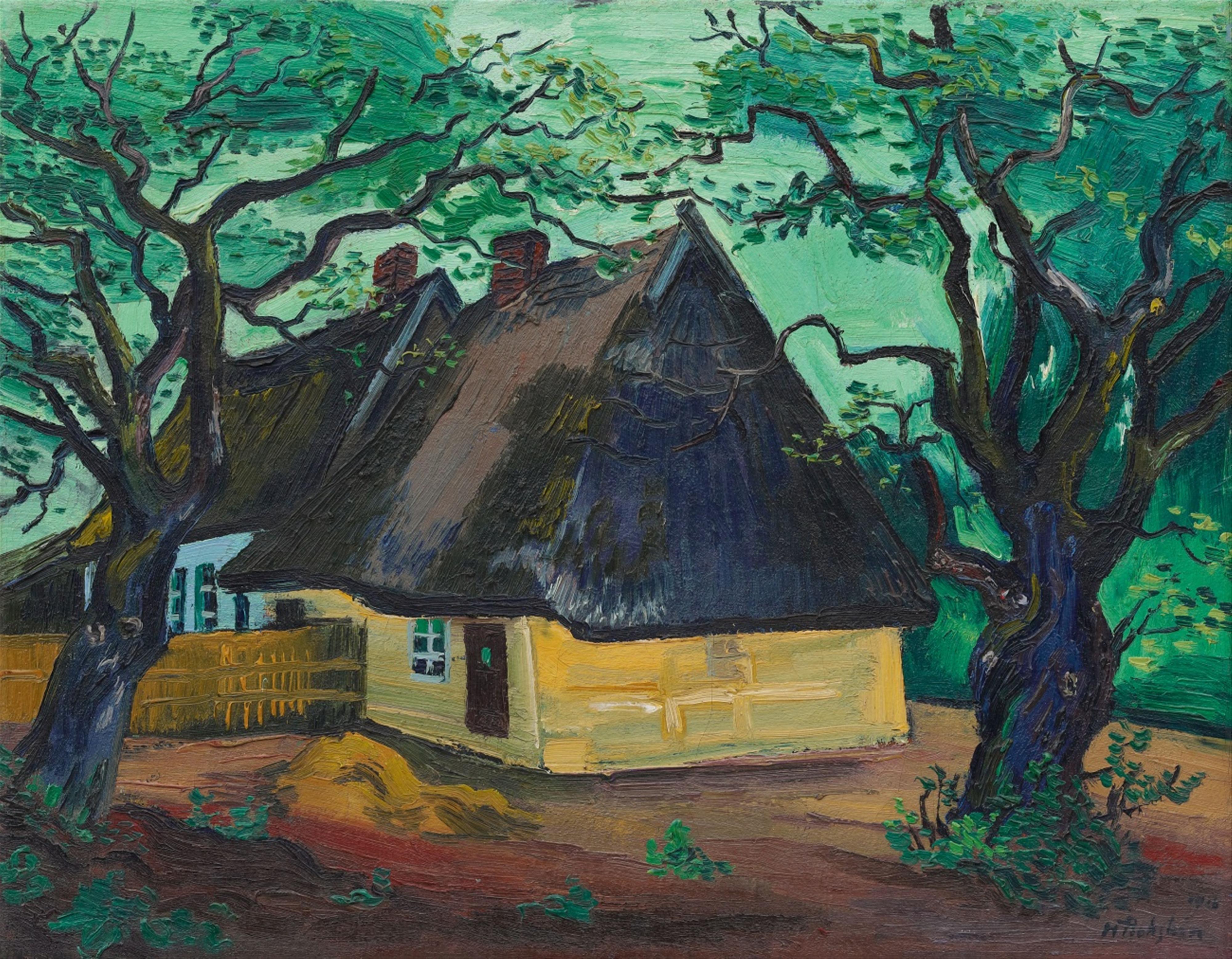Hermann Max Pechstein
Pommersche Fischerkaten
1928
Oil on canvas 51 x 65 cm Framed. Signed and dated 'HMPechstein 1928' [HMP joined] in black lower right and additionally signed, titled and inscribed 'Pom. Fischerkaten / HMPechstein / Berlin W. 62. / Kurfürstenstr. 126' in black brush to the reverse.
Pechstein spent his summer holidays working in Pomerania, along the Baltic Sea, for the first time in the early 1920s - first in Leba, where his second wife Marta was from - and later also in the small fishing village of Rowy. Every year from 1927 to 1933, he and his family spent around four months in the village, which was situated within a very charming landscape next to the sea and the mouth of the Lupawa river, but with just under 300 inhabitants was nonetheless very small, “totally remote, as though forgotten by time. [...] My pencil did not rest. Everything I saw and experienced around me was relentlessly captured and carried home with me, like the trout, salmon, pike and eels that had been caught.” (cited in Aya Soika, Max Pechstein, Das Werkverzeichnis der Gemälde, Munich 2011, vol. I, p. 77, p. 76)
Pechstein painted the people there doing their daily work; he additionally created landscape paintings featuring a supernatural intensity of colour. Isolated farms are recorded, as are the houses lying along the village streets. In contrast to the more descriptive depictions of those houses, the painting “Pommersche Fischerkaten” (Pomeranian Fishers' Huts) is defined by more characteristic, almost portrait-like features. Flanked by a stand of unspoiled knobbly trees, the thatch-roofed little houses lie there snugly crouched down as if embedded. However, precisely through the use of colour, the scene takes on an unreal aspect: the sky is a greenish turquoise, the roofs drifting into violet stand out against the light orange-yellow and light-blue stucco of the houses' walls - the atmosphere of the painting seems charged with electricity. The memory of Vincent van Gogh is clear in the brushstroke and use of colour, thinking for example of his paintings of farms created in Auvers-sur-Oise in 1890: typical motifs in darting brushstrokes and flamboyant colours (cf. de la Faille 759, 792). As early as 1902 the Galerie Arnold had already exhibited 50 paintings by van Gogh, and these made a lasting impression on Pechstein; in Paris in 1908 he went to the van Gogh exhibitions at Druet and Bernheim-Jeune (cf. Maike Hoffmann, Max Pechstein in Paris, in: exhib. cat. Berlin/Tübingen/Kiel 1996/1997, Max Pechstein: Sein malerisches Werk, pp. 68 f.).
It was in such a hut “of 130 years, thatched with reeds, the rooms so tiny that I can easily reach the ceiling with my hand” that Pechstein and his wife lived absolutely spartanly in Rowy, sleeping on straw sacks, though “we go out of the house in our bathing costumes perhaps 100 paces to bathe in the sea, ... from the window, I see the waves breaking on the beach.” (cited in Soika, op. cit. vol. I, p. 79)
Catalogue Raisonné
Soika 1928/16
Provenance
Acquired directly from the artist; Private collection, Berlin (1920s); Private collection, Montreal (by descent); Private collection, Luxembourg; Private collection, Hamburg
Exhibitions
Berlin 1929 (Galerie Victor Hartberg), Max Pechstein, cat. no. 32

